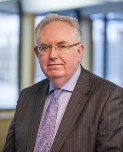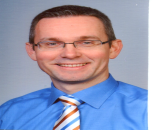About Conference
The 33rd World Heartcare Summit will be held on November 25–26, 2026, in Paris, France, bringing together global leaders in cardiology, healthcare, and medical technology. The summit aims to explore unified strategies to combat cardiovascular disease and enhance heart health outcomes worldwide.
This international gathering will provide a dynamic platform for cardiologists, researchers, clinicians, and industry professionals to exchange insights on the latest advancements in cardiovascular care. Key areas of focus include interventional cardiology, heart failure therapies, precision medicine, AI-driven diagnostics, and preventive approaches that redefine patient-centric care.
The Heart Care-2026 conference will feature a rich scientific program comprising keynote lectures, panel discussions, oral and poster presentations, and hands-on workshops. Delegates will benefit from evidence-based sessions, case studies, and innovations that bridge the gap between research and real-world application.
Set in the heart of Paris, this summit offers not only scientific enrichment but also an opportunity to network, collaborate, and drive impactful change in global heartcare. Join us in advancing the science of cardiology and shaping a healthier future—one heartbeat at a time.
Featured in Heartcare 2026
-
Workshop
-
Keynote & Plenary Sessions
-
Young Researcher’s Forum
-
Symposium
-
Exhibitor Booths
-
Separate Room for B2B Meetings
-
Research Excellence Award
-
Best Poster Competition
-
Young Scientist Award
-
Innovation Showcase
Conference Highlights:
The conference will feature a range of keynote speeches, panel discussions, and interactive sessions led by some of the leading experts in cardiology and cardiovascular medicine. Topics will include:
• Latest advances in cardiovascular research and technology
• Innovative therapies and treatment approaches for heart diseases
• Clinical trials and evidence-based cardiovascular practices
• Prevention, early detection, and screening of cardiovascular disorders
• Patient-centered care, rehabilitation, and support strategies
• Advances in cardiac imaging and diagnostic tools
• Emerging role of digital health and AI in cardiology
• Management of heart failure and arrhythmias
• Interventional cardiology and minimally invasive procedures
• Public health strategies to reduce cardiovascular disease burden
Networking Opportunities:
Attendees will have ample opportunities to network with fellow cardiologists, researchers, clinicians, and industry professionals from around the world. This congress serves as a vibrant platform to exchange ideas on the latest breakthroughs, share clinical experiences, and discuss innovative approaches in cardiovascular care. Building professional relationships here can lead to lasting collaborations and multidisciplinary partnerships.
The conference will also host a dedicated poster session, giving researchers the chance to present their newest findings in an interactive environment. Participants can engage directly with presenters, ask questions, and explore potential areas for joint research. Additionally, informal networking events such as coffee breaks, luncheons, and social gatherings will provide relaxed settings to foster meaningful connections and open dialogue beyond the formal sessions.
Who Should Attend?
Heart Congress 2026 welcomes cardiologists, surgeons, researchers, healthcare professionals, educators, industry leaders, policymakers, students, and trainees. This event provides a platform to connect, learn, and collaborate on advancing cardiovascular care and improving patient outcomes worldwide.
Target Audience are :
1. Cardiologists and surgeons
2. Interventional specialists
3. Cardiovascular researchers
4. Nurses and technicians
5. Medical educators
6. Students and trainees
7. Pharma and biotech experts
8. Medical device engineers
9. Public health leaders
10. Clinical trial managers
11. Rehabilitation therapists
12. Health IT professionals
13. Nutrition and wellness coaches
14. Emergency medicine doctors
15. Primary care physicians
16. Policy makers and regulators
17. Hospital administrators
18. Biomedical scientists
19. Cardiac imaging specialists
Why Attend the 33rd World Heartcare Summit
The 33rd World Heartcare Summit, scheduled for November 25-26, 2026, in the iconic city of Paris, France, is a must-attend event for anyone dedicated to advancing cardiovascular care and exploring next-generation innovations. This prestigious congress will bring together leading cardiologists, surgeons, researchers, healthcare professionals, and industry pioneers from across the globe.
1. Discover Cutting-Edge Research and Innovations:
-
Explore the newest breakthroughs in cardiology and cardiovascular medicine.
-
Gain insights from the latest clinical trials and translational research.
-
Learn about innovative technologies, devices, and treatment strategies.
2. Comprehensive Scientific Program:
-
Keynote lectures from world-renowned cardiovascular experts.
-
Engaging panel discussions on urgent and emerging topics.
-
Hands-on workshops designed to enhance clinical and technical skills.
-
Poster sessions highlighting original research and case studies.
3. Networking and Collaboration Opportunities:
-
Connect with peers, mentors, and collaborators from multiple disciplines.
-
Foster new partnerships with academic, clinical, and industry leaders.
-
Build a global network for future research and professional exchange.
4. Addressing Challenges and Exploring Solutions:
-
Engage in discussions on the growing burden of cardiovascular disease.
-
Identify practical solutions through multidisciplinary perspectives.
-
Share experiences and best practices from diverse healthcare systems.
5. Advancing Professional Development:
-
Stay current with evolving trends and standards in cardiology.
-
Enhance your career with global exposure and recognition.
-
Contribute to the global conversation on heart health and patient care.
Don’t miss this exceptional opportunity to be part of a global movement in cardiovascular science. Join us at the 33rd World Heartcare Summit in Paris to exchange ideas, grow professionally, and shape the future of heart health. Register now and be a voice in the next era of cardiovascular medicine.
Sessions and Tracks
Track 01 - Cardiovascular Disease, Risk Factors, and Nutrition
Cardiovascular disease (CVD) remains a leading cause of global mortality and is strongly influenced by nutrition. Poor dietary habits contribute to vascular plaque formation and accelerate aging. High intake of ultra-processed foods correlates with increased risks of cardiovascular, coronary, and cerebrovascular conditions. Conversely, plant-based diets have shown a 40% reduction in heart failure risk and lower cardiovascular mortality.
-
Atherosclerosis and hypertension influenced by diet
-
Nutrient-specific cardiovascular impacts
-
Role of dietary cholesterol
-
Obesity and cardiovascular risks
Track 02 - Catheterization and Cardiovascular Interventions
This field focuses on catheter-based treatments for heart conditions. Through cardiac catheterization, clinicians diagnose and treat heart valve, muscle, or artery issues. Common interventions include coronary angioplasty and stenting. These procedures reduce post-op recovery time and minimize scarring and discomfort.
-
Advances in interventional techniques
-
Benefits and risks of cardiac catheterization
-
Latest innovations in device-assisted interventions
Track 03 - Cardiometabolic Health: Diabetes, Obesity & Metabolism
Cardiometabolic health encompasses metabolic syndrome, diabetes, and obesity-related cardiovascular issues. Lifestyle factors like poor diet and inactivity contribute to high blood pressure, glucose levels, and cholesterol, increasing cardiac risk. Atherosclerosis links both metabolic and cardiac events, emphasizing prevention through lifestyle changes.
-
Metabolic syndrome and cardiovascular complications
-
Diabetes and heart failure
-
Endocrine influences on obesity
-
Metabolism and heart health
Track 04 - Acute Coronary Syndromes (ACS)
ACS results from decreased blood flow to the heart, often leading to tissue damage. Typical symptoms include chest pain radiating to the left arm or jaw, nausea, and sweating. ACS is categorized into STEMI, NSTEMI, and unstable angina. Women and older adults may show atypical symptoms.
-
Clinical classifications and ECG diagnosis
-
Risk assessment and symptom management
-
Gender-based diagnostic differences
Track 05 - Cardio-Oncology
Cardio-oncology bridges cancer and heart care, addressing cardiovascular effects of cancer treatments. Risk factors like smoking, obesity, and aging impact both diseases. Chemotherapy and radiation can damage cardiac tissues, necessitating preventative strategies and monitoring during oncology treatment.
-
Heart disease post-chemotherapy
-
Radiation-induced cardiac damage
-
Cardiac tumors and syndromes
-
Cancer therapies and cardiac outcomes
Track 06 - Geriatric Cardiology
Geriatric cardiology focuses on diagnosing and managing heart conditions in older adults. Common conditions include arrhythmias, heart failure, and coronary artery disease. Aging exacerbates atherosclerosis and increases cardiovascular mortality, requiring specialized care strategies.
-
Cardiovascular aging
-
Frailty and multimorbidity in older patients
-
Preventive cardiology for the elderly
Track 07 - Heart Failure and Cardiomyopathies
Heart failure arises when the heart can't pump efficiently. Contributing conditions include coronary artery disease and hypertension. Cardiomyopathies alter heart muscle structure and function, with types like hypertrophic and dilated cardiomyopathy increasing risk of arrhythmias and sudden cardiac death.
-
Types of cardiomyopathy
-
Early detection and symptom control
-
Therapeutic strategies for chronic heart failure
Track 08 - Cardiac Imaging
Cardiac imaging enables non-invasive assessment of heart structures and function using MRI, CT, and echocardiography. These tools support accurate diagnosis of congenital defects, ischemia, and valve disorders while minimizing radiation exposure.
-
CMR and cardiac CT
-
Clinical and diagnostic applications
-
Innovations in imaging techniques
Track 09 - Coronary Heart Diseases
Coronary artery disease results from plaque buildup, narrowing arteries and restricting blood flow. Symptoms range from chest pain to silent myocardial infarction. Key risk factors include smoking, high cholesterol, and inactivity. Treatment focuses on lifestyle changes and medical/surgical interventions.
-
CAD risk and prevention
-
Omega-3s and heart health
-
Gender-specific risks
-
Novel therapeutic approaches
Track 10 - Cardiac Regeneration
Cardiac regeneration investigates stem cell therapies and tissue engineering to repair heart tissue post-injury. Advances include progenitor cell transplantation, engineered cardiac tissue, and biomimetic heart valves, offering hope for reversing damage caused by infarction and heart failure.
-
Cell-based therapies
-
Heart tissue engineering
-
Stem cell potential in cardiac repair
Track 11 - Cardiac Pharmacology
Cardiac pharmacology explores drug therapies for hypertension, arrhythmias, and ischemic heart disease. The field also intersects with neuropharmacology due to autonomic control of cardiac function, offering insight into complex cardiac-neural pathways.
-
Medications for arrhythmias and hypertension
-
Neuro-cardiac connections
-
Drug safety and efficacy
Track 12 - Pulmonary Hypertension and Venous Thromboembolism
Pulmonary hypertension involves increased pressure in pulmonary arteries, leading to shortness of breath and fatigue. Venous thromboembolism includes deep vein thrombosis and pulmonary embolism, posing serious health threats. Early detection and anticoagulant therapy are vital.
-
Pulmonary vascular remodeling
-
Causes and treatment of VTE
-
Diagnostic challenges and innovations
Track 13 - Interventional Cardiology and Heart Surgery
Interventional cardiology offers catheter-based solutions for coronary issues, reducing recovery time. Heart surgery includes valve repairs, bypass grafting, and transplants. Advances like robotic-assisted and off-pump surgeries enhance outcomes and patient safety.
-
Angioplasty and stenting
-
Robotic heart surgery
-
Open vs. minimally invasive surgery
Track 14 - Current Research in Cardiology – Future Medicine
Ongoing research aims to revolutionize cardiology via digital health, AI diagnostics, new drug development, and bioengineering. Novel molecular strategies and precision medicine are shaping the future of heart care.
-
AI in cardiology
-
Molecular cardiology
-
Next-gen diagnostic tools
Track 15 - Implantable Cardioverter-Defibrillator (ICD)
ICDs detect and correct life-threatening arrhythmias via defibrillation or pacing. They are key for patients at risk of sudden cardiac arrest. Innovations like subcutaneous string defibrillators offer faster implantation and remote monitoring options.
-
ICD vs. traditional defibrillators
-
Advances in implantable tech
-
Mobile integration and patient safety
Participation/Presentation Options
The 33rd World Heartcare Summit 2026 offers a dynamic platform for cardiologists, researchers, clinicians, and healthcare professionals to engage, collaborate, and share their expertise. Whether you're presenting innovative research, participating in discussions, or expanding your network, Heartcare 2026 provides multiple ways to contribute and benefit.
Oral and Poster Presentations:
Present your latest breakthroughs in cardiovascular science through engaging oral talks or visually impactful poster sessions that encourage in-depth peer-to-peer interaction.
E-Poster and Virtual Presentations:
Share your work digitally through e-poster submissions or virtual talks, allowing global attendees to access and engage with your research online.
Keynote/Invited Speaker:
Inspire a global audience as a keynote or invited speaker, presenting cutting-edge insights and leading discussions on major developments in cardiology.
Delegate Participation:
Attend as a delegate to gain access to all scientific sessions, networking opportunities, and the latest updates in heartcare innovations and research.
Workshops and Symposia:
Lead hands-on workshops or organize focused symposia to showcase specialized skills, clinical case studies, or collaborative research initiatives.
Exhibition and Sponsorship:
Promote your organization’s services, technologies, and products by exhibiting or becoming a sponsor—connect with top professionals and decision-makers in cardiovascular care.
Virtual Participation:
Join from anywhere in the world with live-streamed sessions, virtual networking lounges, and access to all recorded conference content.
Young Researcher Forum:
Present your early-stage research, receive mentorship, and build your scientific profile in front of leading experts and fellow young investigators.
Panelist/Moderator Roles:
Contribute as a panelist or moderator in expert-led discussions, offering perspectives on trending topics, controversies, and clinical advancements in heart health.
How to Get Involved
-
Register as an Attendee: Secure your spot and gain full access to the summit’s scientific content and networking features.
-
Submit an Abstract: Present your work through oral or poster sessions and engage with the international cardiology community.
-
Become a Speaker: Share your expertise as a keynote or invited speaker and help shape the future of heartcare.
-
Host a Workshop or Symposium: Deliver hands-on skills or lead a deep dive into emerging cardiovascular topics.
-
Exhibit or Sponsor: Enhance your visibility, promote your solutions, and connect with global leaders in cardiovascular science.
-
Volunteer: Play a key role in ensuring the smooth operation of the event and be a part of an inspiring global initiative.
Take your first step toward participating in Heartcare 2026, happening in Paris, France, on November 25-26, 2026—where global minds unite for a healthier heart world.
Market Analysis
The global heart health industry is witnessing transformative growth, fueled by the rising burden of cardiovascular diseases (CVDs), which remain the leading cause of death globally. As the 33rd World Heartcare Summit brings together experts in cardiology, healthcare, and innovation, it is important to examine the evolving landscape of the heart health market and the strategic opportunities it presents.
In recent years, the heart health market has expanded significantly due to increasing cases of heart-related conditions, aging populations, sedentary lifestyles, and growing awareness about preventive cardiovascular care. According to current market research, the global heart health industry was valued at USD X.XX billion in 2021 and is projected to reach USD XX.XX billion by 2026, growing at a strong compound annual growth rate (CAGR) of X.X%. This growth is supported by advancements across pharmaceutical therapies, medical technologies, and diagnostic innovations.
Pharmaceutical developments targeting hypertension, cholesterol management, and heart failure continue to be central to cardiovascular care. Meanwhile, the medical device sector is thriving, with widespread use of implantable cardioverter defibrillators (ICDs), pacemakers, stents, and wearable monitoring devices. In parallel, diagnostic tools—ranging from imaging technologies to cardiac biomarker tests—are improving early detection and personalized treatment planning for heart conditions.
Geographically, North America leads the market, supported by advanced healthcare infrastructure and significant R&D investment. Europe remains a strong player with continued emphasis on innovation and healthcare policy initiatives, while the Asia-Pacific region is emerging as a high-growth area due to increased healthcare spending, rising disease prevalence, and improving access to care.
Key trends shaping the future of this industry include the growing adoption of digital health technologies and wearable devices, allowing real-time heart monitoring and patient engagement. Telemedicine and remote care solutions are becoming integral, especially in managing chronic cardiac conditions across large or underserved populations. The integration of artificial intelligence, predictive analytics, and genetic profiling is also paving the way for personalized medicine in cardiology, enabling more precise diagnosis and treatment.
As the heart health industry continues to evolve, in-depth market analysis provides critical insights for identifying opportunities, guiding research priorities, and fostering collaboration between pharmaceutical firms, medical device companies, healthcare providers, and technology innovators. The 33rd World Heartcare Summit offers a global platform to share knowledge, accelerate advancements, and shape the future of cardiovascular care.








